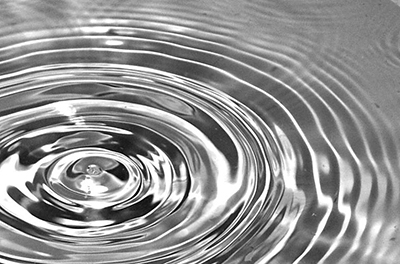 I’ve heard this statement many times before: “I’m just doing my research on what piano to buy”. But what does this actually mean? What do people research when they say that they’re examining a piano? Isn’t a piano just a piano? They’re shiny, they have 88 keys with 3 pedals, right? While that is a correct statement, pianos are so much more than those elements. Perhaps it’s a better question to ask, “What differentiates one piano model from another?” rather than how they are the same.
I’ve heard this statement many times before: “I’m just doing my research on what piano to buy”. But what does this actually mean? What do people research when they say that they’re examining a piano? Isn’t a piano just a piano? They’re shiny, they have 88 keys with 3 pedals, right? While that is a correct statement, pianos are so much more than those elements. Perhaps it’s a better question to ask, “What differentiates one piano model from another?” rather than how they are the same.
Today we’re going to take a look into what I consider to be the single-most critical element of the piano – the felt hammer head. I recognize that the piano is made up of thousands of parts. And to say that one element is responsible for a great piano is simplistic thinking and untrue. The parts of the piano are so inter-related, it is impossible to separate and isolate just one element.
It’s like throwing a rock into the water from which point, all of the ripples follow. In essence, the hammer striking the strings is exactly that except that these are sound waves which emanate from the source of impact. The water is like the strings set in motion and vibrate like waves in the pond (except that technically a piano string is fixed at both ends and called Transverse Standing Waves).
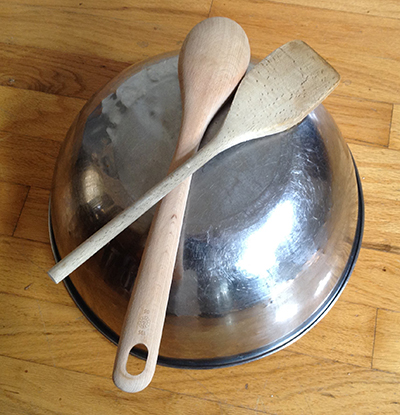 Why do I believe that hammers are the most central point for tone? When my children were young, we used to give them a “drum” made out of an upside down metal baking bowl. (My baking bowls are still dented to this day). They would keep time with the music striking the drum with a wooden spoon mallet. When you change the mallet material – wood, plastic or metal spoons – the tone changes. To make a more significant change, something made out of rubber or cloth alters the tone significantly. (As tired parents will attest, metal bowls and hard mallets are not the wisest choice.) Years of experience in the piano business, the impact of the felt striking the strings is, in my opinion, the watershed.
Why do I believe that hammers are the most central point for tone? When my children were young, we used to give them a “drum” made out of an upside down metal baking bowl. (My baking bowls are still dented to this day). They would keep time with the music striking the drum with a wooden spoon mallet. When you change the mallet material – wood, plastic or metal spoons – the tone changes. To make a more significant change, something made out of rubber or cloth alters the tone significantly. (As tired parents will attest, metal bowls and hard mallets are not the wisest choice.) Years of experience in the piano business, the impact of the felt striking the strings is, in my opinion, the watershed.
Believe it or not, piano hammers are really varied. They might look the same but really they’re not. Here are some of the variables that make piano hammers so different: the felt quality, the wooden moulding, the manufacturing process, shaping and voicing. And the subtleties in each of those categories are so vast, we could speak about them for days. But let’s look at each of these briefly:
Felt Quality
If the hammer is the most significant point in sound creation of piano tone, felt quality is by far the most important aspect in the creation of the hammer. For more interesting reading on the subject of felt, you can read articles here on Piano Price Point from the 2 giants in the industry: Abel and Weickert. Both of these shed significant light on the making of felt. Prior to speaking with Jack Brand about felt, I had no idea that hammer felt actually has approximately 23 parameters in manufacturing involving carding, steaming, felting etc. I also learned about long fibres and short fibres and how they affect tone. Abel also has over the last decade cultivated Natural Felt which is less processed and as the name implies, more natural – using less chemicals to wash and clean the wool leaving in more of the wool wax. Wool wax (aka lanolin) retains more of the 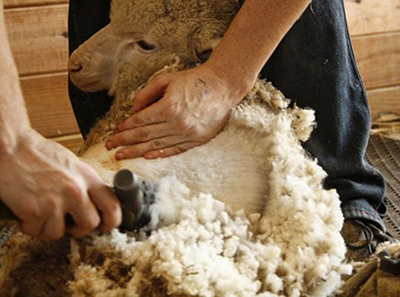 flexibility in the fibres and more versatile and resilient hammers. How do these affect the piano?
flexibility in the fibres and more versatile and resilient hammers. How do these affect the piano?
Simply: you hear it. Become a critical listener. The tone should have depth. In my opinion, this also involves a certain amount of warmth. Percussive hammers are not only tiresome but lack color and limit expression. Not only do you want to hear beautiful tone – neither brassy, nor muted from all 88 notes, but you also want to hear the piano at various dynamic levels. Great felt gives you varied feedback at every volume level. That is why the piano is so incredibly difficult to replicate with anything electronic; every note not only changes volume with pressure at the key but the tone actually transforms timbre or character as well. A good piano will allow you to whisper and sound felty at soft playing and become strident and powerful when played with some force. The demands of the hammer then become extraordinary – matching up 88 notes side to side and dynamically, soft to loud. The better the felt quality, the better the tone and ultimately the expression. My favourite is to play a piano where the color is rich and all of the tones become sounds like autumn leaves.
Wooden Moulding
The center part of the hammer is the moulding. It provides the physical structure for the hammer felt. Changing the type of wood also changes the response of the hammer. The lighter the wood, the faster the hammer can accelerate. The denser the wood, conversely, the heavier the hammer where more energy is required. Hornbeam, walnut and mahogany are wood types that are commonly used for hammer mouldings. Each manufacturer makes decisions around what wood to use in their hammer heads. As a general rule of thumb, lighter woods such as mahogany are considered superior however, I’ve played some incredible pianos with mouldings that are heavier. In my way of thinking, the wood at the center of the hammer is more related to touch of the piano because every gram at the hammer weights the keys at a 5 or 6:1 ratio. Two extra grams at the hammer make the touch 10-12 grams heavier at the keyboard.
Manufacturing
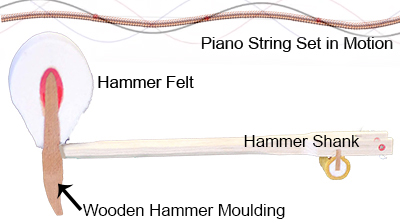 Hot pressed hammers are ones that have added heat while the hammers are being formed. Have you ever ironed clothes and left the iron in one spot a little too long? It doesn’t necessarily burn the cloth but it does burnish or become slightly shiny. Heat has the propensity to change wool fibres. The same can be said about hot pressed hammers. The addition of heat can actually alter the tone. This trend along with the addition of chemicals and staples (to help affix the wool to the wooden hammer moulding) represent a hammer that will not be readily voiced or be pleasing to listen to. The pendulum has swung the other way (for the better, thankfully) in the last decade to see the dominance of cold pressed hammers which is the more traditional method of hammer making. Subtle warmth is still sometimes used but can still be categorized as cold pressed. This leaves the fibres of the wool untarnished, unburnished and more in their natural state. How do you know if hammers are cold or hot pressed? Really, you don’t, but hot pressed hammers in my experience are limited in their tonal expression range. Tonal variety require versatility that I feel can only be found in cold pressed hammers.
Hot pressed hammers are ones that have added heat while the hammers are being formed. Have you ever ironed clothes and left the iron in one spot a little too long? It doesn’t necessarily burn the cloth but it does burnish or become slightly shiny. Heat has the propensity to change wool fibres. The same can be said about hot pressed hammers. The addition of heat can actually alter the tone. This trend along with the addition of chemicals and staples (to help affix the wool to the wooden hammer moulding) represent a hammer that will not be readily voiced or be pleasing to listen to. The pendulum has swung the other way (for the better, thankfully) in the last decade to see the dominance of cold pressed hammers which is the more traditional method of hammer making. Subtle warmth is still sometimes used but can still be categorized as cold pressed. This leaves the fibres of the wool untarnished, unburnished and more in their natural state. How do you know if hammers are cold or hot pressed? Really, you don’t, but hot pressed hammers in my experience are limited in their tonal expression range. Tonal variety require versatility that I feel can only be found in cold pressed hammers.
Voicing
When I was young, I believed that every piano brand had its own voice. This is still a correct statement however voicing a piano can alter almost half of the perceived tone of a piano. Voicing does not change the core of tone (which is why it is so important to start with great materials) but a good technician can release the potential of the tone for the pianist. Sometimes pianos are pingy, dull, thunky, harsh or wild with overtones. (No, those are not technical terms :D) They can sound unfocused or lack sustain. Brilliance or body can be optimized in a piano by voicing. You can read more about this on Piano Price Point here. It is an incredibly important and often undervalued part of the final stages when  purchasing a piano and should not be overlooked.
purchasing a piano and should not be overlooked.
I love this quote by composer, Federico Mompou ~ “When I smell a flower, I don’t think about how it was cultivated. I like to listen to music the same way.” When it comes to piano hammers, we could discuss details for days but ultimately, the smell of the flower – the listening to beautiful tone should be the ideal. Innately I think that hammers should somehow be invisible. Only when they are offensive do I start pulling them apart and analyzing what is at fault and what can be done to rectify them. The piano should be an extension of thought uninhibited. The message then is: play many pianos and discover what you like. Remove your preconceived ideas about brands and you’ll discover there are many different pianos in many different price points that you actually will enjoy.
I leave you with the sounds of Mompou. Enjoy!
MORE PIANO ARTICLES

During the performance of Jacob Collier at the most recent NAMM show I was reminded that music makes us human, that beauty binds us together as a collective, and that the reason the music industry exists is to aid in the creation of art. I needed that reminder without which, the annual trade show featuring many of the great piano makers is just the sale of wares. I believe that people are feeling the uncertainty ...
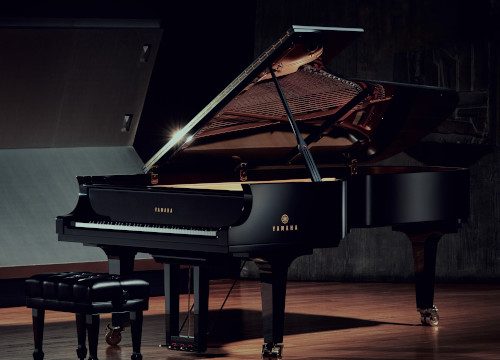
I used to have a teacher who would frequently say, “For every single grade point PAST 80%, it takes as much effort as the FIRST 80.” I believe this statement to be true from experience. The first 80 is the easiest. Chipping away at every point past that is the challenge. The bulk of the work can bring a project into shape but it’s the pursuit of excellence, that’s where the challenge lies. Yamaha is ...

The value of a piano is obvious ~ it’s the music that you make with it. But often, families are going through life changes which involve a house move and unfortunately, the piano needs to be sold. They invariably ask the question, “What are we going to do about the piano?” This question comes up because, as you can imagine, they’re not easy to move. We don’t simply pack them away in a cardboard box ...

You’ve been playing your piano for years now and the time has come to seriously consider downsizing the house and move into a condo. But what do you do with the piano? You love your piano and can’t imagine life without it and besides, you absolutely hate the idea of playing a digital keyboard. Many people don’t know that you can add digital functionality without compromising your existing piano. Yes, it is completely possible to ...

Many years ago, I remember seeing a piano in a museum similar to the one shown above (built in 1787 by Christian Gottlob Hubert. On display at Germanisches Nationalmuseum - Nuremberg, Germany). I have often wondered why acoustic portable pianos never really took off. Although we've seen more portable keyboard instruments like harpsichords, accordions or electronic keyboards, they operate completely different from a traditional piano in that they either pluck the strings, use air with ...

This was the first year since covid that the National Association of Music Merchants (NAMM) trade show was back to its regular January date and, in fact the first show where it felt back to normal. How was it? To answer that, I'm going quickly review the piano market over the last few years. Piano sales boomed during covid. Think about it - everyone was at home and with time on their hands, many turned ...